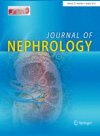Improvements in digital pathology equipment for renal biopsies: updating the standard model
Abstract
Introduction
Digital pathology can improve the technical and interpretative workflows in nephropathology by creating hub-spoke networks and virtuous collaboration projects among centers in different geographical regions. New high-resolution fast-scanning instruments combined with currently existing equipment were tested in a nephropathology hub to evaluate possible upgrading in the routine processing phases.
Methods
The scanning performance of two different instruments (Aperio vs hybrid MIDI II) was evaluated and a comparative quality control check was performed on obtained whole slide images.
Results
Both with default and custom settings for light microscopy, MIDI II proved to be faster, with only slightly more time required to prepare the scan and larger final file size as compared to Aperio (p < 0.001). No differences were noted in the number of out-of-focus slides per case (p = 0.75). Regarding immunofluorescence, the new scanner required longer preparation time (p = 0.001) with comparable scanning times and final file size (p = 0.169 and p = 0.177, respectively). Quality control showed differences in 3 quality features related to white background and blurriness (p < 0.001). No major discordances in the final diagnosis were recorded after comparing the report obtained with slides scanned using the two instruments, with only one case (4%) showing minor disagreement.
Conclusion
The present report describes the experience of a hub nephropathology center adopting next generation digital pathology tools for the routine assessment of renal biopsies, highlighting the need for a complementary approach towards a philosophy of interoperability.



